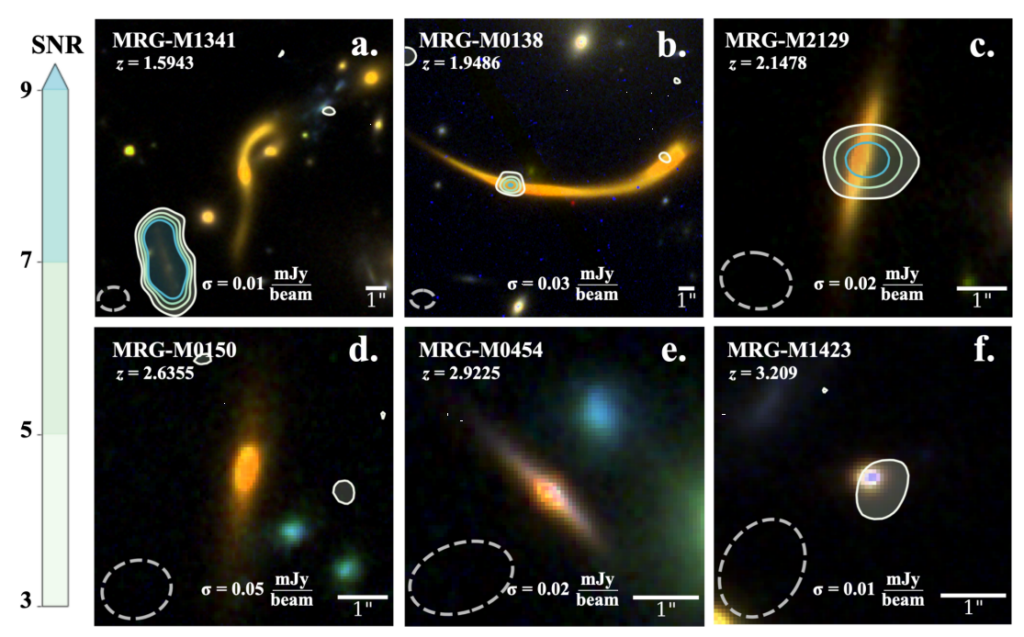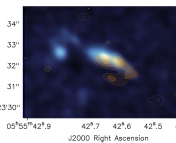Title: Quenching of star formation from a lack of inflowing gas to galaxies
Authors: Katherine E. Whitaker, Christina C. Williams, Lamiya Mowla, Justin S. Spilker, Sune Toft, Desika Narayanan, Alexandra Pope, Georgios E. Magdis, Pieter G. van Dokkum, Mohammad Akhshik, Rachel Bezanson, Gabriel B. Brammer, Joel Leja, Allison Man, Erica J. Nelson, Johan Richard, Camilla Pacifici, Keren Sharon & Francesco Valentino
First Author’s Institution: Department of Astronomy, University of Massachusetts, Amherst, MA, USA & Cosmic Dawn Center (DAWN), Copenhagen, Denmark
Status: Published in Nature [closed access, open access view only version here!]
We have a problem in galaxy evolution models: not only do we observe more dead galaxies in the early Universe than we expect, but we also find these dead galaxies earlier in time than predicted (out at redshifts of z ~ 4, for example in this Astrobite). Sort of like calling your phone dead when it runs out of power, we call galaxies dead when they’ve run out of molecular gas to convert into new stars. These dead, quenched, quiescent galaxies consume their gas vigorously and early on — star formation in half of massive galaxies is quenched by the time the Universe was 3 billion years old, or 20% of its current age. So far, current theory struggles to predict enough realistic quiescent galaxies throughout cosmic history to match observations.
Solving this dead galaxy problem is challenging, as by nature these galaxies are at high distances with little stellar light emitting from them. Most studies struggle to securely determine the reason for this rapid quenching, and are limited to shallow observations or to averaging across many galaxies. Today’s paper provides useful clues for this mystery by taking a unique, in-depth look at a sample of early, dead galaxies.
The REQUIEM Sample
Today’s authors take advantage of gravitational lensing to gain more signal and detail by investigating magnified images of the galaxies. Gravitational lensing occurs when some clump of mass (in this case, a galaxy cluster) in the foreground magnifies and warps the light — a consequence of general relativity — coming from the background object (here, a distant quiescent galaxy).
The targets are 6 galaxies from the REsolving QUIEscent Magnified galaxy survey, or REQUIEM. All are strongly lensed with magnification factors ranging about 3 to 30 times. Each galaxy was selected to either have low star formation rates or post-starburst signatures, so they are characteristically quenched. The REQUIEM sample is distinct from other samples of quiescent galaxies studied for their gas content, as their star formation rates are extremely low, they are at higher distances, and their observations can go deeper due to the lensing magnification.
The authors took millimeter wavelength observations with the Atacama Large Millimeter/submillimeter Array (ALMA) to measure the galaxies’ dust emission. Decades of empirical evidence has demonstrated there is a standard gas to dust ratio of about 100. Therefore, with a snapshot of the dust emission coming from a galaxy, astronomers can derive the amount of gas in that galaxy. What they discovered was somewhat surprising — all of their galaxies are essentially out of gas.
Non-detections as an important clue
Two of the REQUIEM galaxies showed detectable dust emission. These direct dust detections imply ~1% molecular gas fractions (the fraction of the galaxy’s mass contained in gas rather than stars). This low gas fraction is both exceedingly low and rare to detect in quiescent galaxies in the distant universe because of the sensitivity of observations required.
The other four galaxies had no dust detections. Given the depth of the observations, these non-detections provide a valuable clue as they imply upper limits on the dust mass. This limit on the amount of dust (and therefore gas) present in the galaxies reveals a population of massive, distant galaxies with gas fractions more than 10 times lower than is predicted! This implies the galaxies’ fuel supplies were used up quickly early on in the history of the cosmos, rather than being slowly consumed and converted into stars. Images of the stellar light and dust emission for each galaxy are shown in Figure 1.

Most galaxies observed in the early Universe have plenty of fuel with gas fractions of about 50%, but the galaxies in our sample have about 100 times fewer new stars and a gas fraction upper limit of less than 1%. Thus, this sample comprises the first galaxies astronomers could constrain down to this level at such high distances. These data show a significant lack of dust, which implies a lack of gas, and in turn indicates that the physical process removing or consuming the gas occurred at early times for some population of quiescent galaxies.
Out of fuel without a refill
The authors explain that these galaxies either depleted their gas supplies within the first few billion years of the Universe, or ejected it into the surrounding medium between galaxies. While both scenarios may be true, high fractions of heavy elements in dead galaxies today — which points to generations of star formation — supports the interpretation that massive galaxies consume their fuel early on.
The authors also point out that the galaxies stopped forming stars not because of some sudden inefficiency in converting gas to stars, but rather the reservoir of gas is removed. In other words, it’s not that your phone charger only barely works, it’s that you don’t have a phone charger at all.
This lack of gaseous fuel may be permanent, as based on previous observations of massive quiescent galaxies, their fuel supplies are not often rejuvenated. Therefore, there must be some physical mechanism that blocks gas replenishment. Possible explanations include centrally driven winds that clear out the gas, or energy injection from the galaxy’s central supermassive black hole that evacuates gas. Regardless, it seems these massive quiescent galaxies are going without a refill for the next 10 billion years.
Challenging the current model
The REQUIEM sample provides key insight for our understanding of massive quiescent galaxies and how they fit into galaxy evolution as a whole. These new observations are the first to probe dust in quiescent galaxies at such early times, allowing the researchers to take a crucial measurement of the gas content of these galaxies. Since we know they exist at early times, and this new data points to the rapid and complete consumption of gas in quenched galaxies, we have new constraints for galaxy evolution models. Tracing the dust and estimating the gas for these 6 galaxies is a first step to solving the mystery of massive, dead galaxies’ empty fuel tanks: the ultimate requiem to the Universe’s dead galaxies.
Astrobite edited by Alice Curtin
Featured image credit: ALMA (ESO/NAOJ/NRAO)/S. Dagnello (NRAO), STScI, K. Whitaker et al




